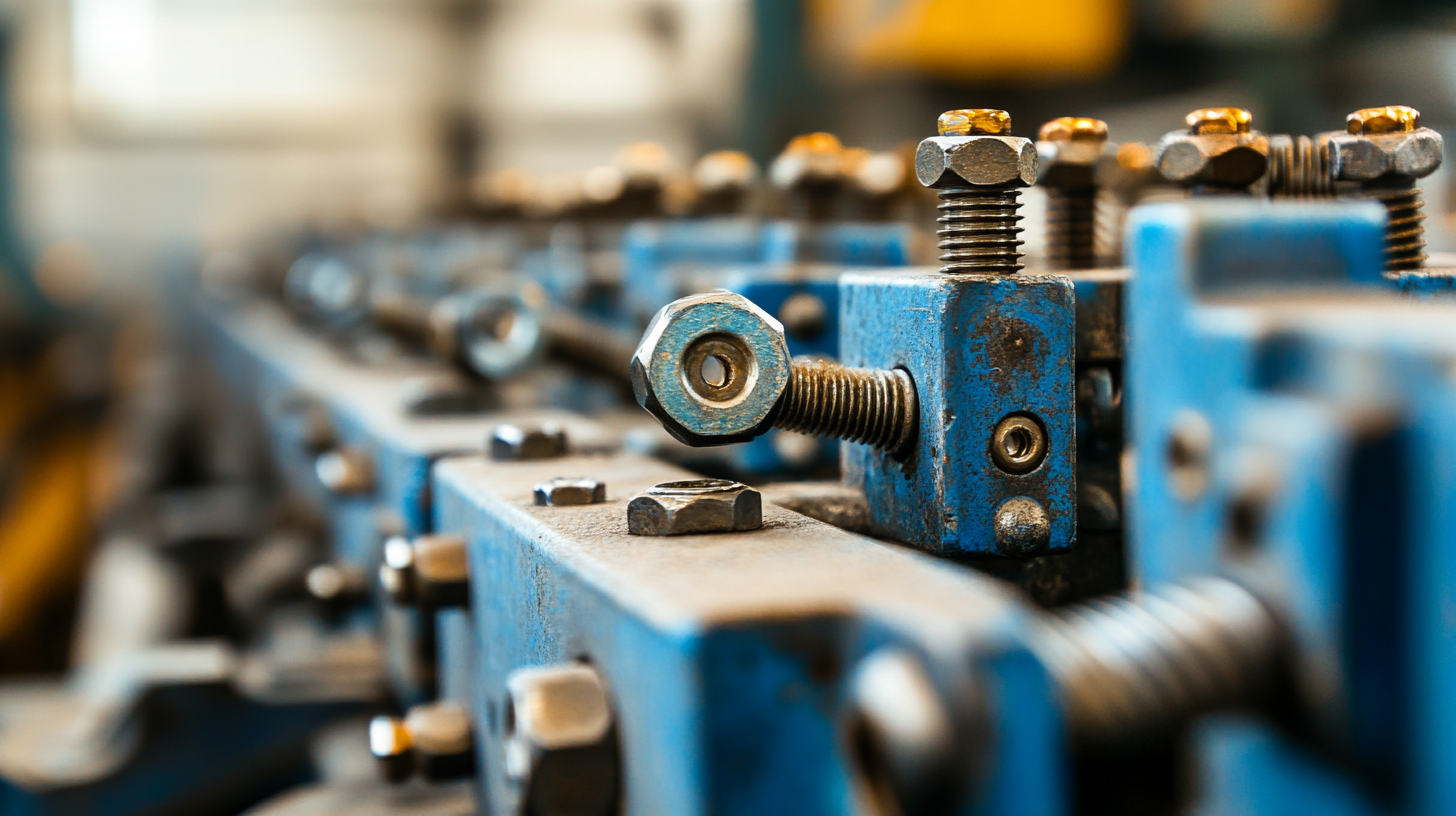Leave Your Message
In the face of escalating US-China tariff challenges, China's manufacturing sector demonstrates remarkable resilience, particularly in niche markets such as Cabinet Door Hardware Hinges. According to recent industry reports, the global market for cabinet hardware is projected to exceed $30 billion by 2025, with a significant portion of this growth driven by demand in the Asian manufacturing hubs. Despite tariff impacts, China has leveraged its robust supply chain and innovative production techniques to enhance competitiveness. The country accounted for over 45% of global cabinet hardware production in 2022, showcasing a 10% year-on-year growth, even as overall manufacturing faced headwinds. This strategic focus on specialized segments like Cabinet Door Hardware Hinges not only mitigates the impacts of tariffs but also positions China as a leading player in the global hardware market, reaffirming its critical role in providing high-quality solutions to international demands.

The US-China trade war has significantly impacted manufacturing dynamics, with tariffs forcing many businesses to reassess their supply chains. Despite these challenges, China's manufacturing sector has demonstrated remarkable resilience, particularly in niches like cabinet door hardware hinges. Manufacturers are innovating to maintain competitiveness by optimizing production processes and adopting advanced technologies. This adaptability enables them to mitigate the effects of tariffs and continue meeting global demand.
**Tip:** Consider diversifying your supply chain to minimize dependence on any single market. By sourcing materials from different countries, manufacturers can avoid potential disruptions caused by tariffs or trade restrictions.
Moreover, companies that invest in automation and lean manufacturing principles are often better equipped to withstand economic fluctuations. By streamlining operations and reducing waste, these businesses can enhance productivity and keep costs low, which is crucial in a tariff-impacted environment.
**Tip:** Regularly review your manufacturing processes to identify areas for improvement. Embracing continuous improvement techniques can lead to significant cost savings and efficiency gains, positioning your business favorably amidst volatile trade conditions.
This chart illustrates the growth rates of China's manufacturing sector, particularly focusing on cabinet door hardware hinges, during the past years amidst the US-China tariff challenges.
Amid the ongoing tariff challenges posed by the US-China trade tensions, Chinese manufacturers, particularly in the cabinet door hardware sector, have adopted innovative strategies to ensure resilience and sustained growth. According to a recent report from Research and Markets, the global cabinet hardware market is projected to grow at a CAGR of 4.3% from 2021 to 2026. Chinese manufacturers have leveraged this growth opportunity by enhancing product quality and investing heavily in automation to reduce production costs. By implementing advanced manufacturing technologies, they can maintain competitive pricing, even in the face of tariffs.
Additionally, many Chinese companies are diversifying their supply chains to minimize dependency on US markets. A survey by McKinsey highlighted that over 70% of manufacturers in China are actively seeking alternative markets in Southeast Asia and Europe. This strategic pivot not only mitigates the risk of tariff impacts but also opens up avenues for expansion into new customer bases. By focusing on innovation, quality, and market diversification, Chinese manufacturers are navigating the complexities of the current economic environment while positioning themselves for long-term success in the cabinet door hardware sector.
In the competitive landscape of cabinet door hardware production, innovation and technology adoption play pivotal roles for manufacturers in China. According to a report by MarketsandMarkets, the global hardware market is projected to reach $78.6 billion by 2025, emphasizing the increasing demand for high-quality and durable products. Amidst the looming challenges posed by US-China tariffs, Chinese manufacturers are increasingly integrating advanced manufacturing technologies, such as automation and IoT, to enhance efficiency and reduce production costs.
The adoption of smart manufacturing solutions is enabling companies to streamline their operations and improve product quality. For instance, the utilization of CNC machining and robotic assembly lines has been shown to reduce lead times by approximately 30%. Furthermore, a report from ResearchAndMarkets indicates that the cabinet hardware market in Asia-Pacific is expected to grow at a CAGR of 5.78% during the forecast period, driven by rising urbanization and consumer preferences for customized furnishing solutions. This growth highlights the significance of continuous innovation in product design and functionality, enabling manufacturers to maintain a competitive edge in the face of tariff uncertainties.

Quality control is paramount in the manufacturing sector, particularly for companies producing cabinet door hardware hinges in China. Amidst the challenges posed by US-China tariffs, manufacturers are increasingly recognizing that maintaining high standards of quality can serve as a powerful differentiator. By focusing on rigorous quality control processes, Chinese manufacturers can not only ensure product reliability but also enhance their global competitiveness. This includes implementing advanced testing methods and adhering to international standards, which can significantly reduce defect rates and build consumer trust.
In addition, a strong emphasis on quality control can lead to innovations that improve product design and functionality. Manufacturers that invest in quality management systems often find that they can respond more swiftly to market demands, customize products, and lower production costs in the long run. This resilience becomes crucial in navigating the complexities of trade barriers, as it reinforces the brand's reputation and fosters long-lasting relationships with clients. Ultimately, prioritizing quality not only mitigates the impact of tariffs but also positions manufacturers for sustainable growth in the competitive landscape of the hardware industry.
The cabinet hardware market has seen notable trends as tariffs between the US and China continue to create significant challenges. Manufacturers are adapting to these pressures by innovating their product offerings and optimizing supply chains. The increase in costs due to tariffs has prompted many companies to rethink their sourcing strategies. As a result, we can expect a greater emphasis on local production and the exploration of alternative markets, which could lead to a shift in the competitive landscape of cabinet hardware.
Moreover, the growing consumer demand for sustainable and high-quality products is also influencing trends in the cabinet hardware sector. As manufacturers respond to these market needs, they are prioritizing environmentally friendly materials and production processes while maintaining the durability and aesthetic quality that consumers expect. These trends are likely to shape the future of cabinet hardware, positioning companies that embrace sustainable practices as leaders in the market. In this dynamic environment, those industry players who can effectively navigate tariff pressures while meeting consumer demands will emerge stronger and more resilient.

